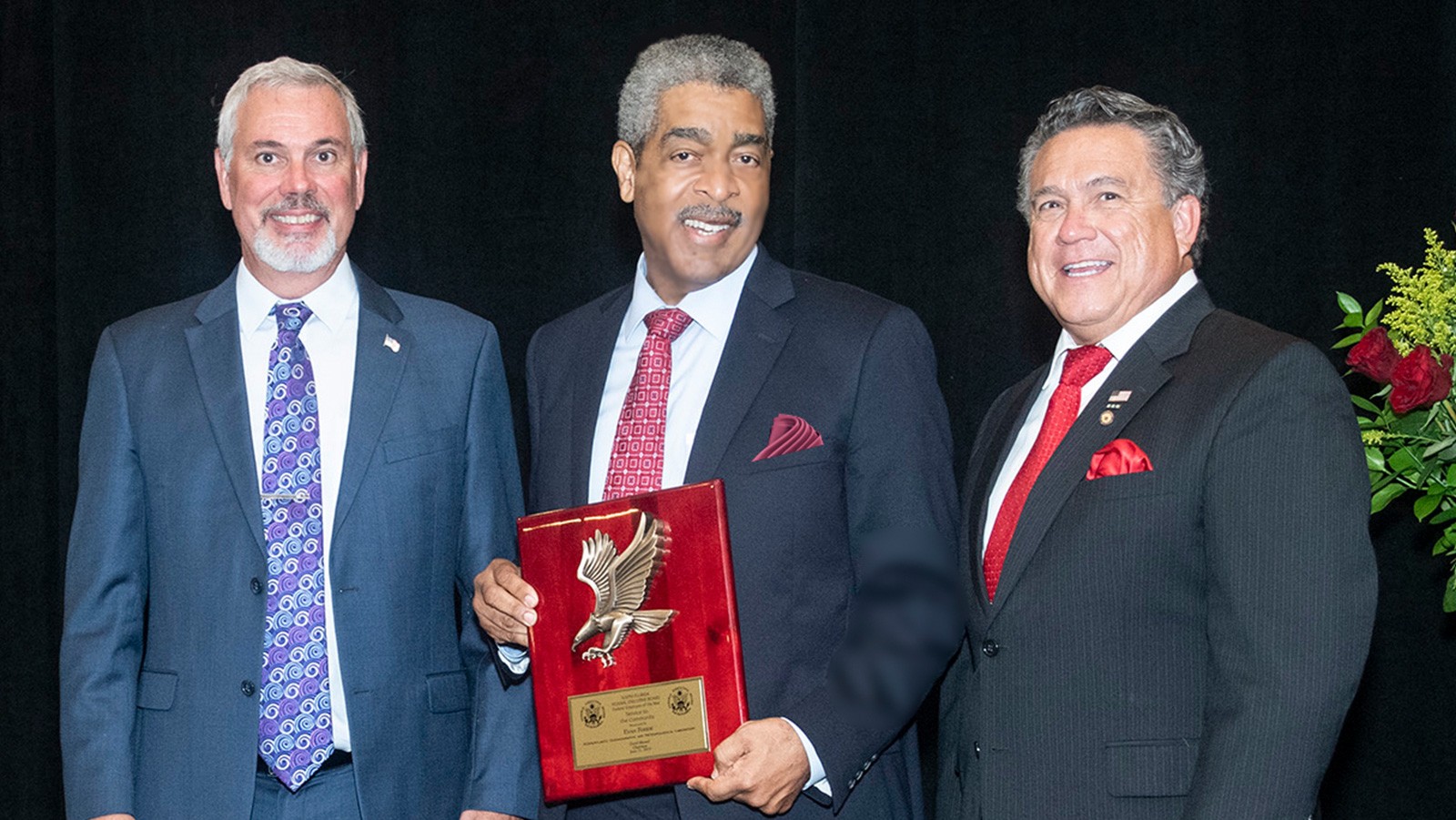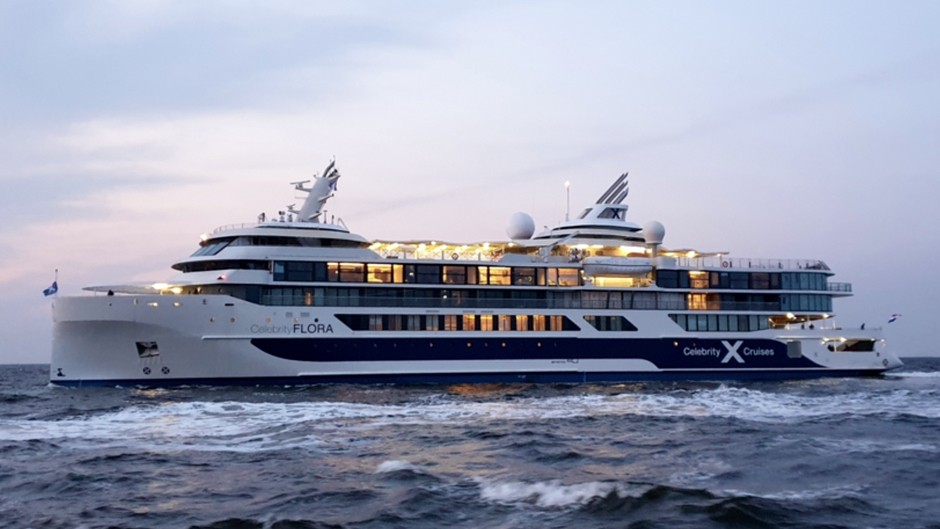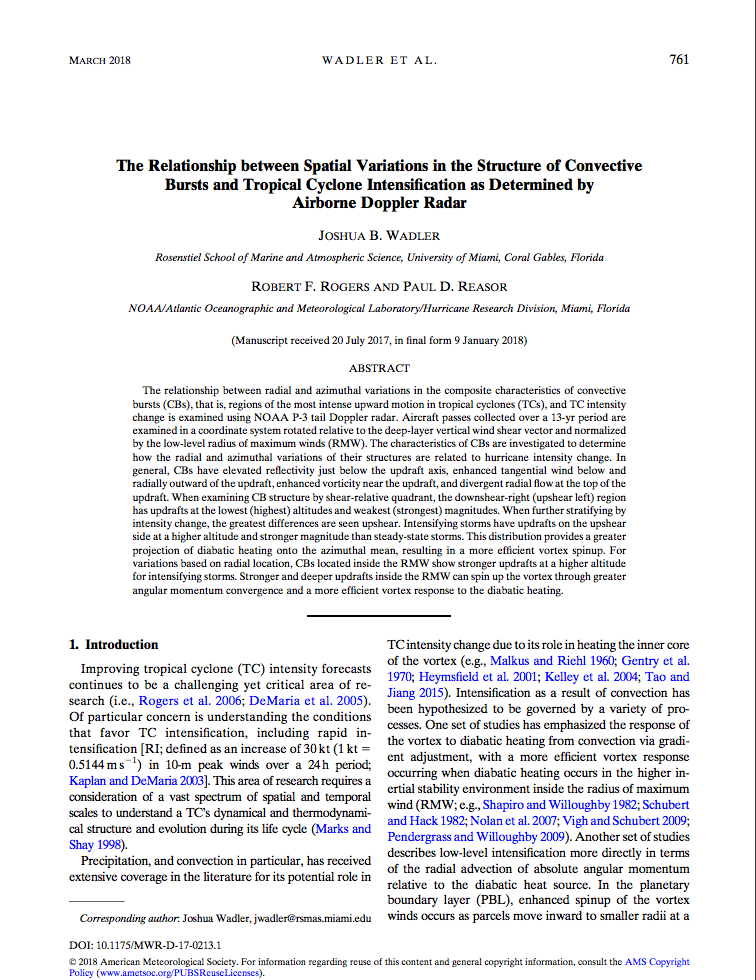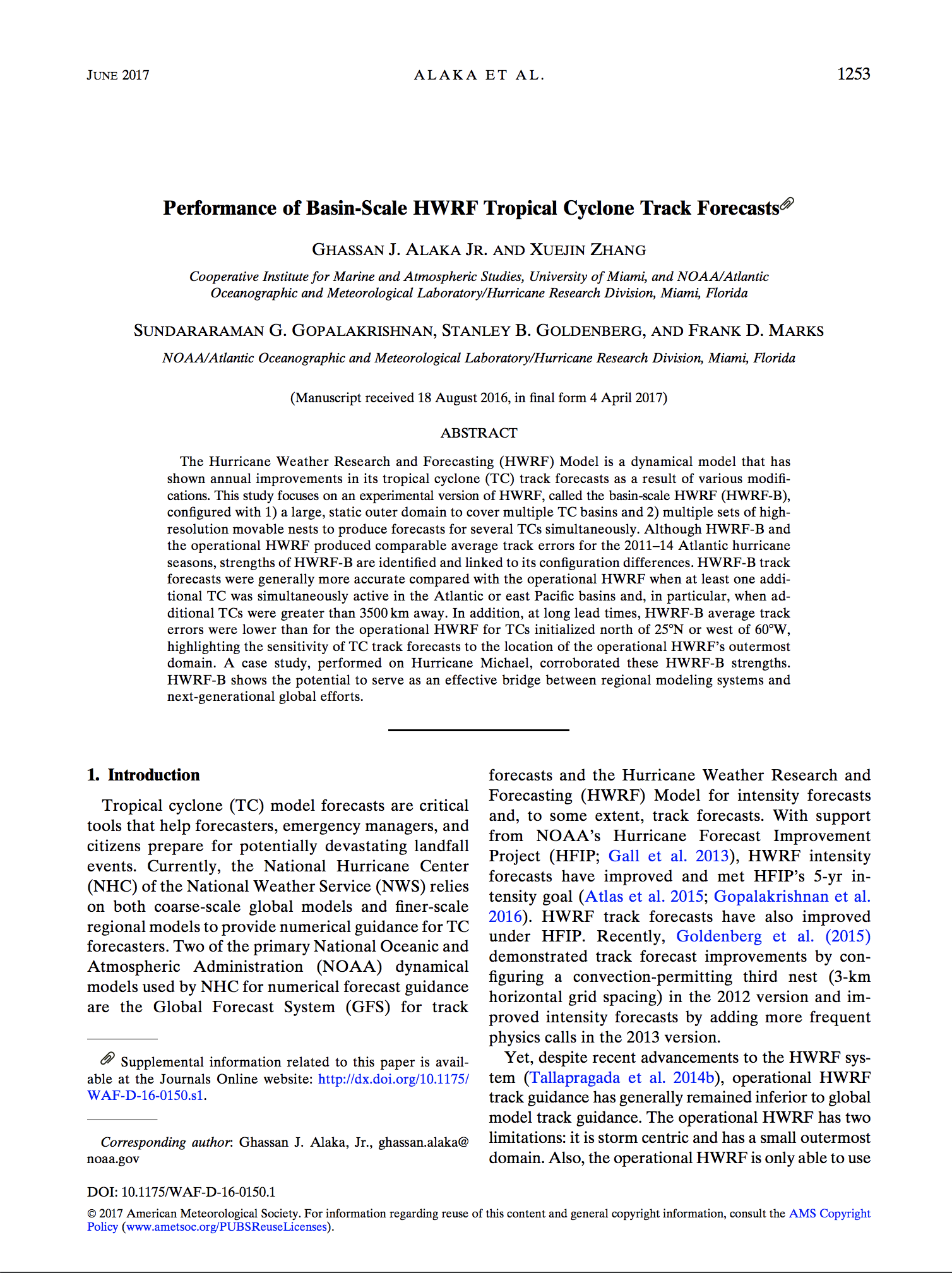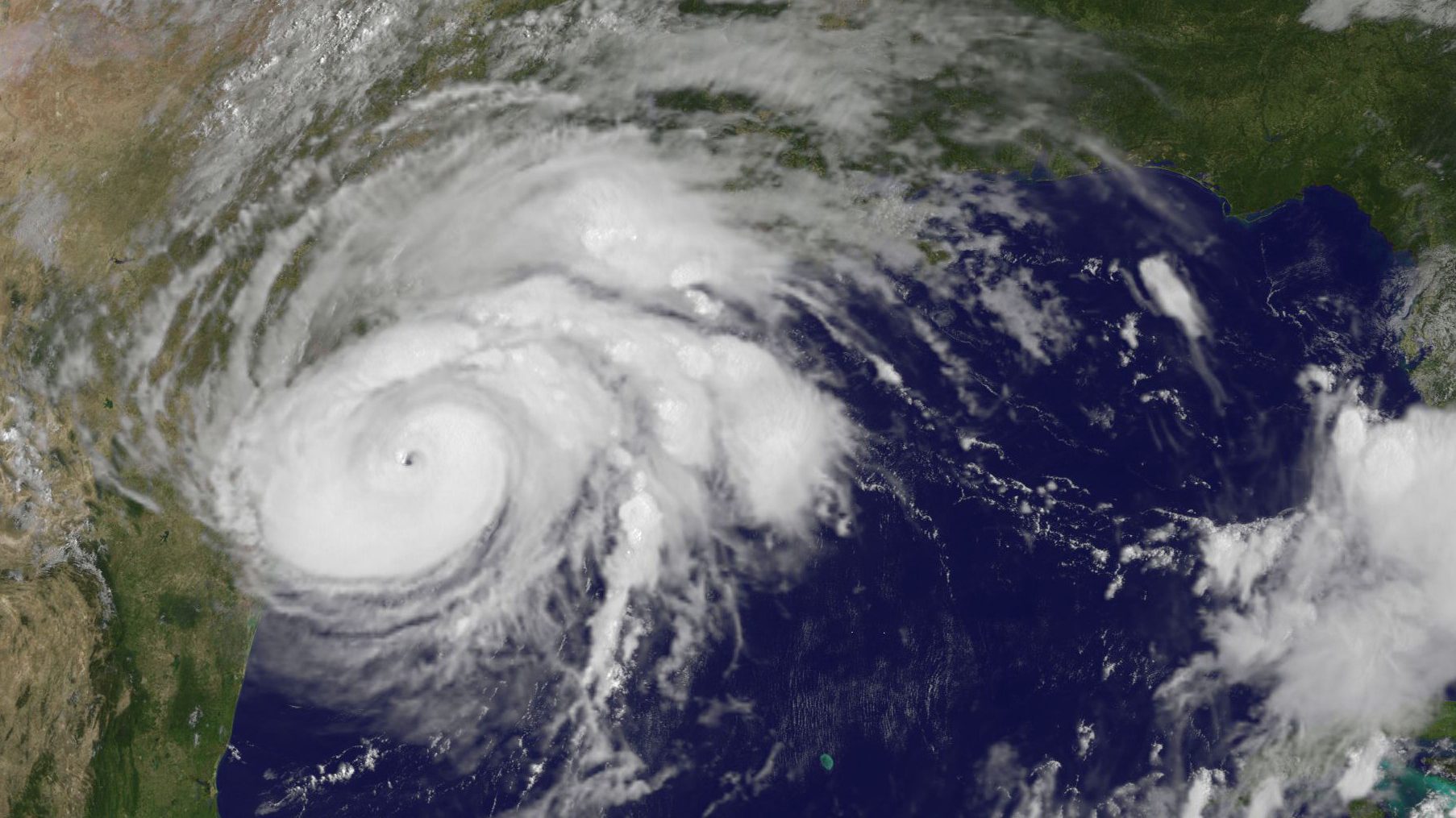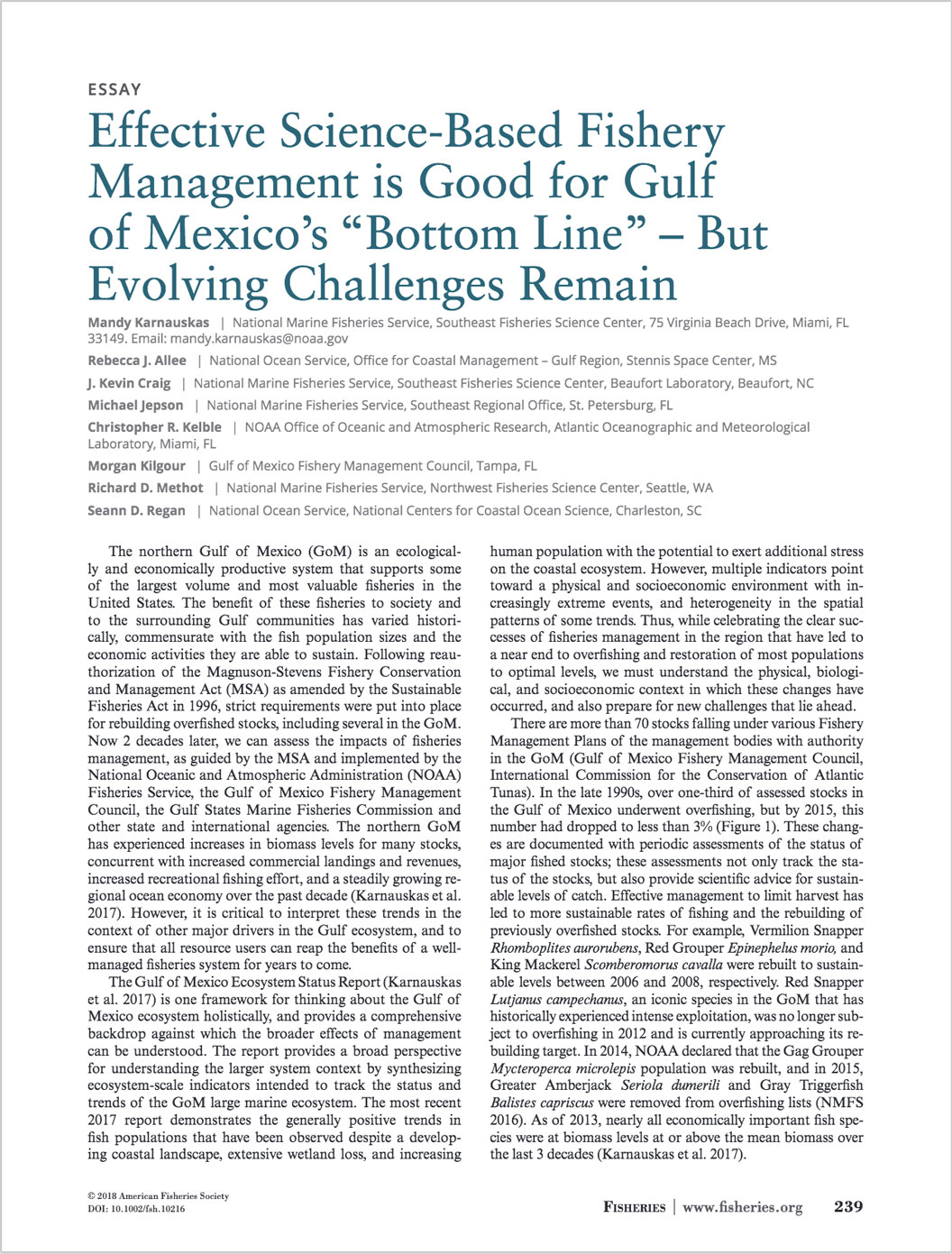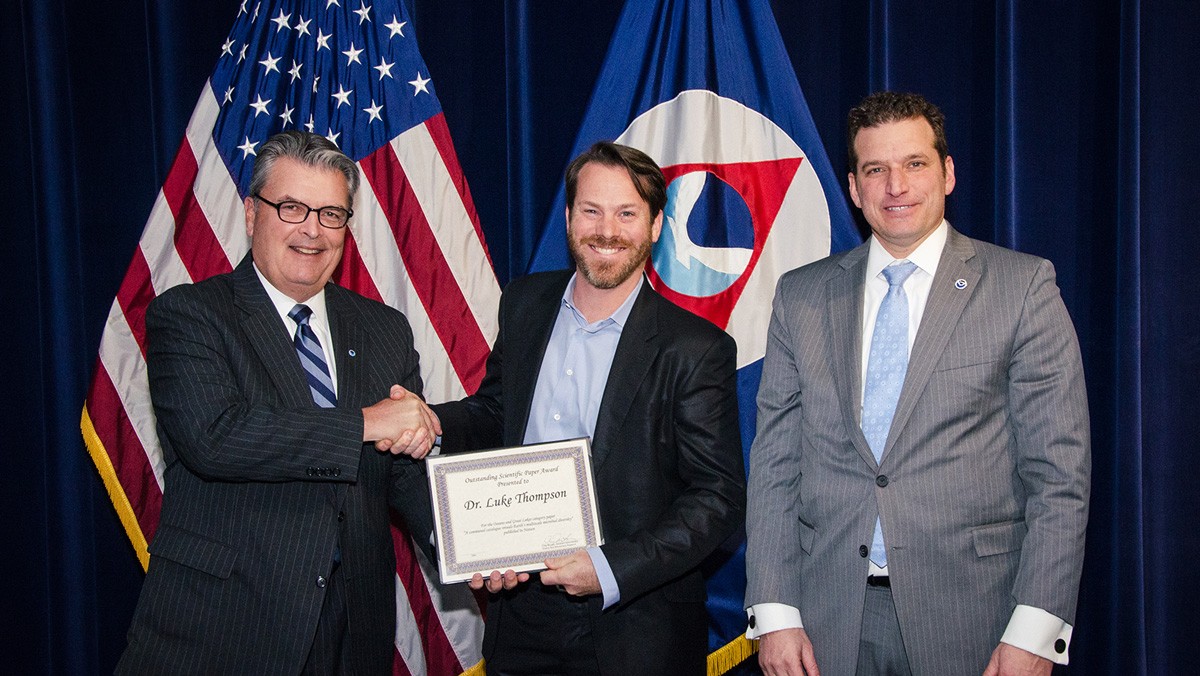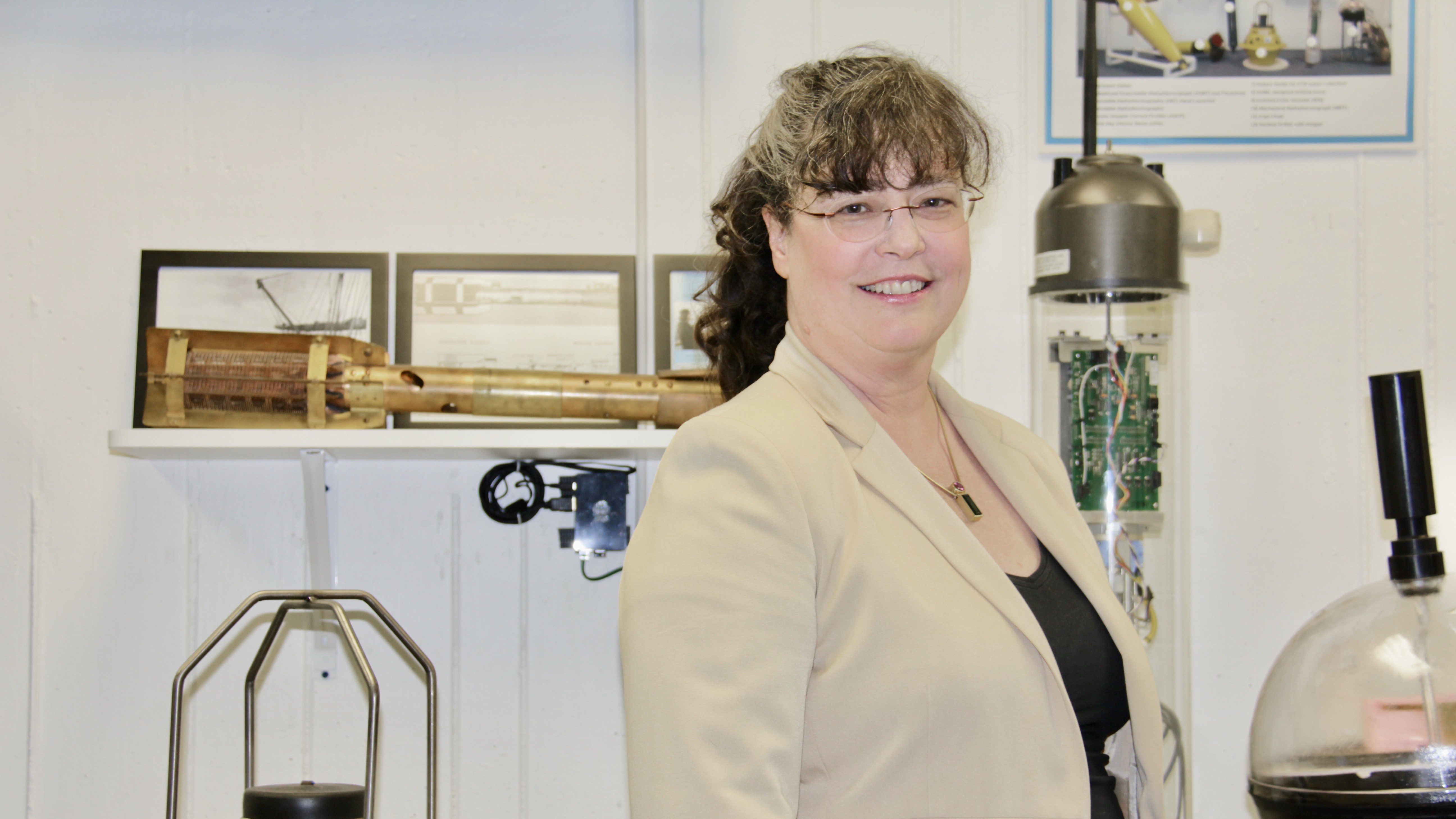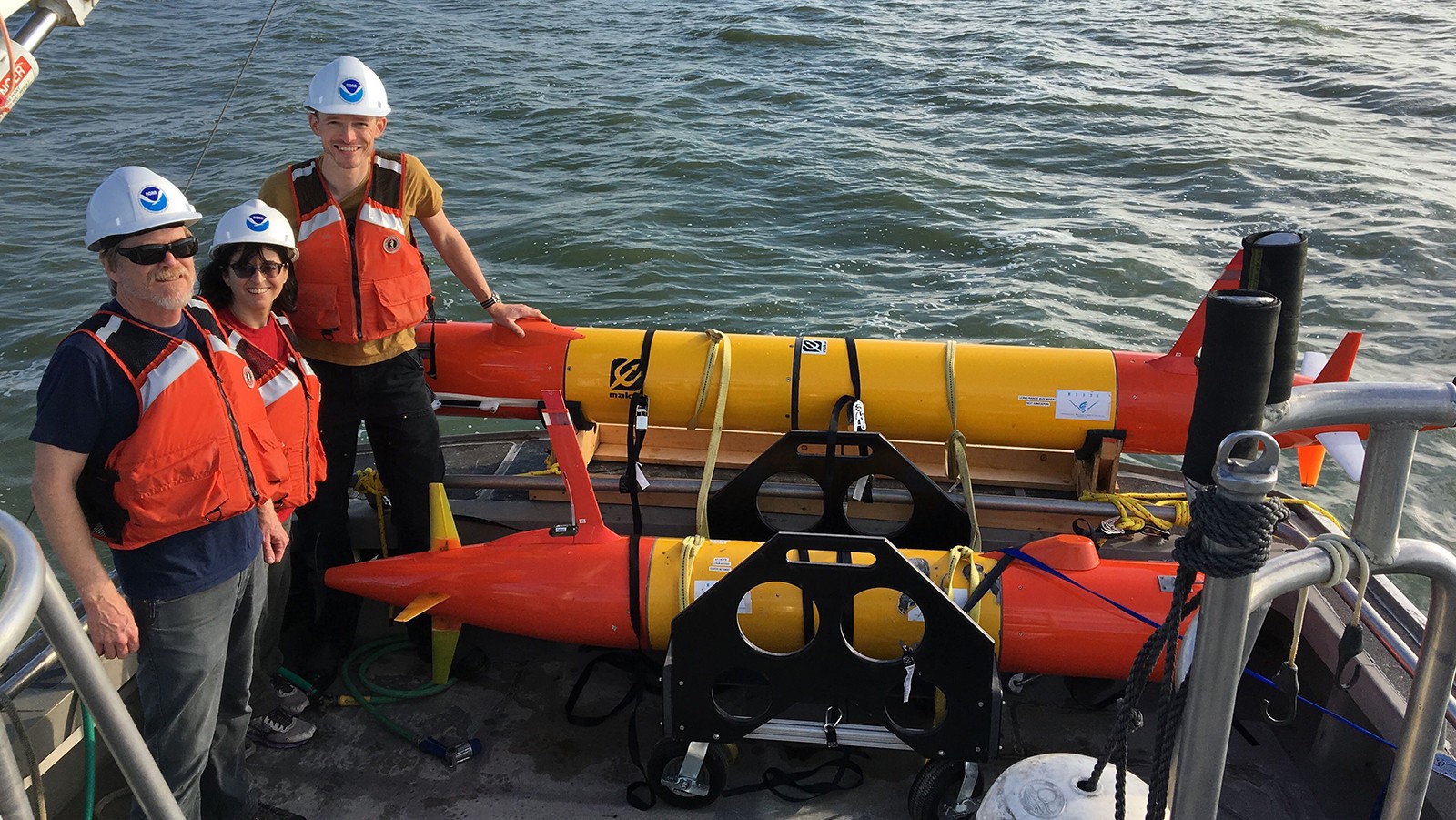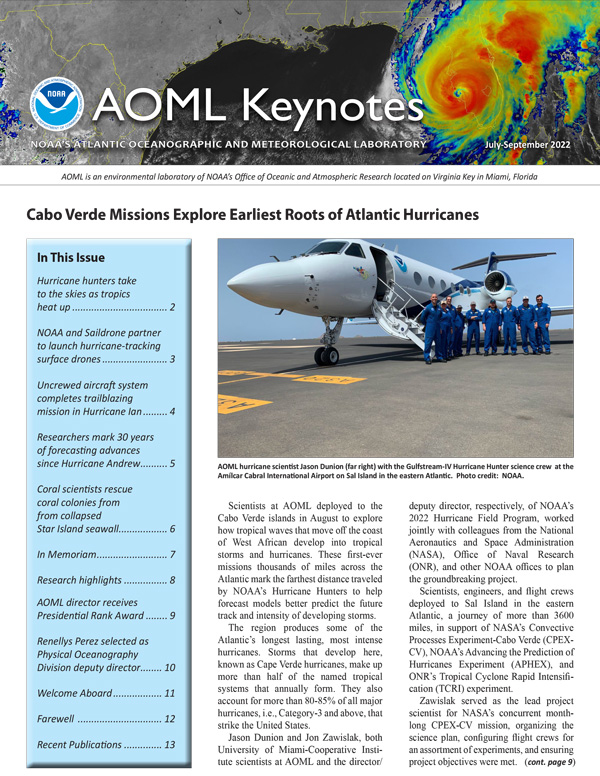Karnauskas, M. , Allee, R. J., Craig, J. K., Jepson, M. , Kelble, C. R., Kilgour, M. , Methot, R. D. and Regan, S. D. (2019), Effective Science‐Based Fishery Management is Good for Gulf of Mexico’s “Bottom Line” – But Evolving Challenges Remain. Fisheries, 44: 239-242. doi:10.1002/fsh.10216
Introduction: The northern Gulf of Mexico (GoM) is an ecologically and economically productive system that supports some of the largest volume and most valuable fisheries in the United States. The benefit of these fisheries to society and to the surrounding Gulf communities has varied historically, commensurate with the fish population sizes and the economic activities they are able to sustain. Following reauthorization of the Magnuson‐Stevens Fishery Conservation and Management Act (MSA) as amended by the Sustainable Fisheries Act in 1996, strict requirements were put into place for rebuilding overfished stocks, including several in the GoM. Now 2 decades later, we can assess the impacts of fisheries management, as guided by the MSA and implemented by the National Oceanic and Atmospheric Administration (NOAA) Fisheries Service, the Gulf of Mexico Fishery Management Council, the Gulf States Marine Fisheries Commission and other state and international agencies. The northern GoM has experienced increases in biomass levels for many stocks, concurrent with increased commercial landings and revenues, increased recreational fishing effort, and a steadily growing regional ocean economy over the past decade (Karnauskas et al. 2017). However, it is critical to interpret these trends in the context of other major drivers in the Gulf ecosystem, and to ensure that all resource users can reap the benefits of a well‐managed fisheries system for years to come.
See Full Article
